You can translate this blog using Google translator widget. And you can always comment in your language, of course!
Yellow texts are in English

montgomery clift
23.8.10
21.8.10
Biography of Robert La Guardia.- Chapter one / Biografía de Robert LaGuadia.- capítulo 1
The public remembers him as a splendid screen presence, glamorous and vulnerable. He floats by on that giant sceen, the image of the intensity of youth, in its most beautiful guise. He was an overnight sensation. Men and women loved him for the promise offered by his unthreatening masculine grace and looks. Bobby-soxers screeched and pounded the floors when his magnificent, sensitive face loomed in darkened movie theaters. Fan clubs popped up all over the country. Hollywood moguls found themselves forced to accede to his demands, their rigid control over actors shattered. He was a total enigma: a polite, well-brought-up young man who achieved great power in Hollywood passively, without deviousness.
But for those people who saw Monty, the real Monty, close up -who lived with him and ached with him- the images are very different. Like a series of takes arriving at the editing laboratory, these memories of an older Monty flicker, out of sequence, with haunting power: Monty walking against the wintry Manhattan wind, his shoulder and hunched body leaning heavily against a black man, his male nurse. Collapsing over and over, ina state of drugged drunkenness, on the floor of a Fire Island summer house, as the homosexual boys and men, fatigued with picking him up, let him lie, and walk over him as if he were a piece of inanimate junk. Waking up in a semi-coma from drugs and liquor ina bedroom of his sepulchral townhouse on Sixty-first Street; being picked up bodily by his nurse an put under a cold shower, in order to face another dose of the life which drove him this state. His hands and body sometimes shake with tetany, because of a rare hormonal disease. His legs cannot hold him steadily -the drinking has brought on phlebitis. A thyroid condition has made him pop-eyed. Cataracts cause him to wear bottle-cap glasses. An automobile accident and too many pills have ruined his looks, made the scary, and a plastic surgeon with a criminal background begins to make them worse. He has been blackballed from themotion picture business. He sits in his bedroom, vacantly watching television, tears drenching his cheeks. He has destroyed his sexual life. He will not eat. He makes tearful, desperate calls, but his best friends have left him. He shoots Demerol into his arms to anesthetize himself to the pian of his existence. And he drinks... and he drinks.
At the age of forty-five, his heart stops.
The personal story, with its riveting horrors, seems locked in combat with his unique professional achievement. Montgomery Clift was, and still is, one of the more important influences on contemporary picture acting. Few of today's younger generation of moviegoers realize, when they sit back in awe at the intensity and truth of an Al Pacino or Robert De Niro or Dustin Hoffman or Jack Nicholson, that these actors' roots can be traced back, in large part, to the strivings of Monty Clift. Many people, when confronted with these so-called "rebel" actors, tend to think "Method" or "Actors Studio", or credit an actor by the name of Marlon Brando with having started it all, but that is a misconception.
The facts speak for themselves. Monty had no predecessor for his screen presence. He did not use the Method, and it was Brando and James Dean and the rest who followed and often built upon Monty's achievement.
To be continued...
19.8.10
Una foto para celebrar el post nº 1.000
 Qué duda cabe que me hubiera gustado estar entre las
Qué duda cabe que me hubiera gustado estar entre lasMonty's ladies
(English text)
Monty's Ladies circa 1948: Full-length image of American actor Montgomery Clift (1920 - 1966) smiling as he stands with his arms around Barbizon models Kay Grogen, Elena Long, Vivian Kennedy, Lynn Moore, and Maria O'Leary in front of a small stage. The women are all wearing long skirts. Clift is wearing a suit and a diagonally striped tie. (Photo by Hulton Archive).
18.8.10
Retrato (32).- Portrait by G. Maillard Kesslere, 1945
No sabía de la existencia de este retrato y me pregunto si Monty posó realmente o simplemente, como creo, el autor se inspiró en una fotografía. ¿Llegó Monty a verlo, lo tuvo o enseguida pasó a otras manos?. Me pregunto si lo tuvo algún miembro de la familia y quién es la persona que lo vende. Por otra parte, en las fotos se ve las sombras de quien hace fotos al cuadro para presentarlo a la subasta.
Ésta es la información que acompaña a la subasta:
(English text)
This is an original pastel drawing of Montgomery Clift by G. Maillard Kesslere in 1945. For those unfamiliar with him, you can find out all about him at: http://broadway.cas.sc.edu/index.php?action=showPhotographer&id=38 Just copy & paste into your browser. It is one of a kind and was rendered while Clift was performing on Broadway in "Foxhole in the Parlor" by Elsa Shelley in mid 1945. We have owned it for over twenty years. As you can see from the unretouched photos and the signature, this pastel is a thoroughly genuine G. Maillard Kesslere, and in its original frame. Condition is exactly as depicted in the photos. Please excuse the reflection of the ceiling fan and the photographer. We guarantee its authenticity. Dimensions of the drawing are 15.25 by 20.25 inches. Frame measures 14.75 by 29.75 inches.
17.8.10
16.8.10
Entrevista a Amy Lawrence
(English text)
Posted on Advocate.com July 13, 2010
The Most Beautiful Man in Film

Well remembered for the staggering effect his film performances in classics such as A Place in the Sun and From Here to Eternity had on post-World War II movie audiences, Montgomery Clift is equally known today as one of Hollywood’s greatest casualties. A mysterious, sensitive antidote to the blandly handsome bobby-soxer idols of the day, Clift ushered in a new, naturalistic style of acting, years before Marlon Brando and James Dean, who both worshipped him.
The camera adored him as well. Clift was described by one biographer as “having a face of impenetrable beauty,” and Elizabeth Taylor, his close friend and frequent costar, claimed her heart stopped the first time she saw him. After a near-fatal auto accident in 1956 ravaged his perfect face, Clift, now addicted to alcohol, painkillers, and, by some accounts, tormented by his closeted homosexuality, began a downward spiral that would last until his death at 45 in 1966. Marilyn Monroe, Clift’s costar in 1961’s The Misfits who was tortured by her own demons, famously called him “the only person I know who’s in worse shape than I am.” But in The Passion of Montgomery Clift (University of California Press, $24.95) Dartmouth film professor Amy Lawrence performs an academic autopsy on the late actor’s legacy and challenges the myth of Clift as the tortured, self-destructive film star. Lawrence discusses with The Advocate the reasons we’re still under the spell of the charismatic actor.
The Advocate: There are so many biographies of Montgomery Clift and numerous websites devoted to him. What was the biggest surprise you learned about him while researching your book?
Amy Lawrence: I was most impressed by Clift’s canny understanding of his own image. Many biographers depict him as refusing to participate in the Hollywood star system, but that didn’t mean he was ignorant of it. He understood how an actor’s image was built and maintained. In giving interviews or choosing roles, he knew exactly how to shape a performance to achieve the effect he wanted — and to resist the efforts of others to simplify a character. For instance, he was aware that screenwriters and directors often wanted to make the hero perfect; Clift wanted to make the character human, complicated, and not always admirable.
Clift is often spoken of in context as a “gay actor” or in conjunction with Marlon Brando and James Dean. What do you see as Clift’s singular legacy?
Brando and Dean both thought of Clift as singular. Brando saw Clift as his only major competition, and Dean saw him as a model, an ideal to emulate. Unlike those performers, Clift’s best work has not become dated. In Red River, From Here to Eternity, A Place in the Sun, I Confess, and half a dozen others, his performances are impeccable. At his best he is never mannered or predictable. His performances are subtle, intelligent, graceful, and deeply empathetic regardless of the character’s flaws.
Watch the trailer for A Place in the Sun below:

How did Clift’s being gay — or bisexual, as some suggest — when it was still taboo affect his drinking, drug taking, and ultimate downward spiral?
The homophobia of the time, which intensified nationally just as Clift’s career was beginning in the late 1940s and early ’50s, certainly exerted pressure on Clift. A serious relationship with choreographer Jerome Robbins in the ’40s threatened both their careers when Robbins was blackmailed into testifying before the House Un-American Activities Committee hearings regarding communists and other “subversives” in Washington and the entertainment community. I would be hesitant, though, to cast Clift as a “sad young man,” “self-loathing homosexual,” or fit him into any other category into which gay men were sorted from the 1950s to ’70s. Alcoholism affects everyone, and in the postwar period heavy drinking was routine across the board. By the time Clift’s drinking became full-blown alcoholism, it was impossible to disentangle from his devastating car accident, the prescription painkillers he needed at the time, and his professional fear regarding the damage done to his face. In the latter part of his career, his drinking and drug taking were so dominant in his life that he couldn’t function without them. Paradoxically, at the point when he worked with unsupportive or openly hostile homophobic producers and directors, the drugs and drinking sustained him as much as they destroyed him.
You write about the fan magazines of the 1950s that frequently used sexually suggestive headlines such as “Who Is Monty Kidding?” How well known was the truth about Clift’s sexuality during that era?
Clift worked in a period when fan magazines were challenged by scandal magazines, each promising “the truth” about stars’ private lives. Ironically, even the scandal rags did not want any “truth” firmly established because that would rob them of the chance to repeatedly tantalize readers with the next promised exposé. Biographical information suggests that people who worked with Clift always “knew” in exact proportion to what they wanted to know. Fans likewise. Everyone minimized the complexity of Clift’s emotional relationships — with men, older women, young women — in order to maintain the image of the actor that appealed to them most.

A recent article in Newsweek suggests audiences can’t accept gay actors as romantic leading men when we know the truth about their real-life sexuality and uses Rock Hudson as an example. How do you think this applies to Clift, who had such intense chemistry on-screen with Elizabeth Taylor and other actresses?
When audiences think they know something about an actor’s personal sexuality it becomes available as a touchstone to spectators watching a performance but is never mandatory. People judging a performance often appreciate it most the more it varies from what we think we know about the performer — casting against type, nice people playing psychos, beautiful actresses playing ugly. If we think of Clift as an actor, then his persuasiveness as a romantic lead opposite Taylor, Olivia de Havilland, or Jennifer Jones increases our appreciation of his skill as he seems to become inseparable from the role.
Another issue is history itself. As new generations are introduced to Clift and Hudson, they often react to the performers without knowing any biographical information about them. They are also less invested in “the truth” than those who experienced a change in their perception through revelations and the exposure of secrets. The freer sexuality of Brando or Dean, for instance, has not come to dominate their images.
How do you think Clift’s career would have progressed if he hadn’t been in the auto accident in 1956?
Although the accident had a major effect on him psychologically and physically as well as having an effect on audiences and their reading of his performances in relation to the accident, I believe his alcoholism would have continued and that his career would have been much the same. His drinking affected his work on the set of From Here to Eternity, which was shot in 1953, well before the accident. In the three-year break he took after that film his face began to show the puffiness and aging effects of alcohol abuse. When he returned to film for Raintree County in 1957, people would have been surprised by how he had aged if they hadn’t had the accident to blame it on.

How do you think Clift would have fared personally and professionally if he began his career today, with the intrusion of the Internet and paparazzi?
The intrusion of the media today is offset by the openness of some gay performers — though not romantic leading men just yet. As Tom Cruise’s career shows, it is possible to withstand rumors and media speculation if you have the power and the will to do so. Because Clift was never as closeted as Rock Hudson, I don’t believe he would fight terribly hard to maintain the illusion of offscreen heterosexuality. He might be more likely to take a Keanu Reeves approach, where the actor neither courts nor tries to dispel the fantasies of any fan. In several roles in the severely repressive 1950s he even courted audiences to read his characters — and maybe himself — as gay in the casually flirtatious scenes in Red River, the rejection of heterosexual relationships in I Confess, Suddenly, Last Summer, and Freud, the material on gay Army life that acts as a subtext throughout From Here to Eternity, and the relationship with Frank Sinatra’s character in the film.
Why does Clift continue to hold such a fascination for film buffs 44 years after his death?
Clift was a brilliant actor. His performances often seem completely natural and effortless. His complex performances of masculinity in films such as Red River, From Here to Eternity, The Misfits, A Place in the Sun, and The Heiress appeal to gay men and women as well as heterosexual men and women. Fans find in Clift everything from a romantic icon or sexual fantasy figure to a model of courage, commitment, and integrity. His characters are often simultaneously stoic and vulnerable, lithe, stubborn, and funny.
Watch Clift in a scene from From Here to Eternity below:
15.8.10
Sesión de fotos.- fotografías de Alfredo Valente
14.8.10
Muere el hijo de Libby Holman
Estaba previsto que marchara a París para hacer más publicidad pero Topper, el hijo de Libby Holman murió en un accidente. Sin consultar con la Paramount, Monty salió inmediatamente de Italia y voló a Nueva York para acompañarla.
Christopher Reynolds, conocido como Topper, era hijo natural de Libby Holman. Falleció escalando el monte Whitney el 7 de agosto de 1950. En 1952, Libby Holman funda The Christopher Reynolds Foundation, que como puede verse en el enlace permanece activa en la actualidad.
13.8.10
Red River.- artículo en la Wikipedia (Español / English)
Río Rojo
| Red River | |
|---|---|
| Título | Río Rojo |
| Ficha técnica | |
| Dirección | Howard Hawks |
| Producción | Howard Hawks |
| Guión | Borden Chase Charles Schnee |
| Música | Dimitri Tiomkin |
| Fotografía | Russell Harlan |
| Reparto | John Wayne Montgomery Clift Joanne Dru Walter Brennan Coleen Gray Harry Carey John Ireland Noah Beery Jr. |
| Datos y cifras | |
| País(es) | Estados Unidos |
| Año | 1948 |
| Género | Western |
| Duración | 133 minutos |
| Ficha en IMDb | |
Río Rojo es una película de 1948 protagonizada por John Wayne y Montgomery Clift. La producción, dirigida por Howard Hawks, es incluida por la American Film Institute entre las diez mejores del género Western.
Argumento
La trama gira alrededor del ranchero Thomas Dunson (Wayne), quien, a mediados del siglo XIX, trata de empezar su propia hacienda en Texas. Al inicio de su empresa conoce a un huérfano de nombre Matthew Matt Garth a quien adopta. Al cruzar el río Rojo, y no importándole la propiedad del territorio a manos de otro ganadero, se afinca en la zona. Tiempo después, al terminar la Guerra de Secesión, el rancho de Dunson se encuentra sumido en problemas económicos. Debido a esto, decide emprender la marcha a Misuri donde, según él, encontrará un buen precio por su ganado. Entre sus principales ayudantes se encuentran el entonces adulto Matt (Clift) y Groot Nadine (Walter Brennan). El transcurso de la travesía se desarrolla en io de muchos contratiempos. Agregado a esto, la conducta de Dunson se vuelve tiránica con sus empleados.
Por otro lado, aunque Dunson recibe recomendaciones de enviar su hato hacia Abilene, donde el ferrocarril ha arribado y la ruta es más segura, decide seguir su propósito inicial. En medio de una reyerta, Matt decide dirigirse a Abilene, a pesar de una amenaza de muerte del mismo Dunson ante su rebelión. Matt logra su propósito de vender el ganado en la ciudad, e incluso arregla un cheque a nombre de Dunson para darle parte de las ganancias. Sin embargo, el ranchero logra encontrar al joven Matt y entre ambos estalla una pelea.
Críticas
- New York Times: «en al menos dos terceras partes de la cinta, es una historia real de cowboys y de la dura, peligrosa vida que soportaban».[1]
- Turner Classic Movies: «uno de los grandes Westerns producidos en Hollywood».[2]
- Variety: «la producción y dirección de Howard Hawks le otorga una magnífica interpretación a la historia de la formación del oeste estadounidense...»[3]
Referencias
- ↑ Red River (1948). .Nytimes.com.
- ↑ RED RIVER: The Essentials. TCM.com
- ↑ Red River. Variety.com.
- Red River en Internet Movie Database
- Red River en Filmsite.org
- Red River en Allmovie
- AFI Crowns Top 10 Films in 10 Classic Genres
English text:
Red River
 Theatrical release poster | |
| Directed by | Howard Hawks Arthur Rosson (co-director)[1] |
| Produced by | Howard Hawks |
| Written by | Borden Chase Charles Schnee |
| Starring | John Wayne Montgomery Clift Walter Brennan |
| Music by | Dimitri Tiomkin |
| Cinematography | Russell Harlan |
| Editing by | Christian Nyby |
| Distributed by | United Artists |
| Release date(s) | September 30, 1948 (USA) |
| Running time | 133 min. |
| Country | United States |
| Language | English Spanish |
Red River is a 1948 Western film directed by Howard Hawks, giving a fictional account of the first cattle drive from Texas to Kansas along the Chisholm Trail. The dramatic tension stems from a growing feud over the management of the drive, between the Texas rancher who initiated it (John Wayne) and his adopted adult son (Montgomery Clift).
The film also starred Joanne Dru, Walter Brennan, Coleen Gray, Harry Carey, John Ireland, Hank Worden, Noah Beery Jr. and Harry Carey, Jr. Borden Chase wrote the script with Charles Schnee, based on Chase's story, "The Chisholm Trail."
Contents |
Plot
Thomas Dunson (John Wayne) is a stubborn man who wants nothing more than to start up a successful cattle ranch in Texas. Shortly after he begins his journey to Texas with his trail hand, Nadine Groot (Walter Brennan), Dunson learns that his love interest (Coleen Gray), whom he had told to stay behind with the wagon train with the understanding that he would send for her later, was killed in an Indian attack. Despite this tragedy, Dunson and Groot press on, only to chance on an orphaned boy named Matthew Garth (played as an adult by Montgomery Clift), whom Dunson effectively adopts. With only a couple head of cattle, Dunson and the boy enter Texas by crossing the Red River and Dunson proudly proclaims all the land about them as his own. Two Mexican men appear on horseback and inform Dunson that the land already belongs to their boss. Dunson dismisses this inconvenient fact, kills one of the men, and tells the other man to inform his boss that Dunson now owns the land. Dunson names his new spread the Red River D, after his chosen cattle brand for his herd. Fatefully, he promises to add M (for Matt) to the brand, once Matt has earned it.
Fourteen years pass and Dunson now has a fully operational cattle ranch. With the help of Matt and Groot, his herd now numbers over ten thousand cattle, but he is also broke as a result of having been on the losing side in the American Civil War. With the price of cattle in Texas not to his liking, Dunson decides to drive his massive herd hundreds of miles north to Missouri, where he believes they will fetch a much better price. After hiring some extra men to help out with the drive, including expert marksman Cherry Valance (John Ireland), they set off on their perilous journey northwards. Along the way, they encounter many troubles, including a stampede sparked by one of the men making a sudden noise while trying to steal sugar from the chuck wagon.
Deeper problems arise when Dunson's tyrannical leadership style begins to affect the rest of the men. When Dunson attempts to lynch two of the men who tried to desert the drive, Matt rebels. With the help of Valance and the other men, Matt takes control of the drive in order to take it to the closer railhead in Abilene, Kansas, leaving Dunson behind. This infuriates Dunson, who vows to track down Matt and kill him.
On the way to Abilene, Matt and his men repulse an Indian attack on a wagon train. One of the people they save is Tess Millay (Joanne Dru), who falls in love with Matt. Matt leaves in a hurry one night during a rain storm and has to leave Tess behind. Later Tess encounters Dunson, who is still on Matt's trail, and tries to dissuade him from his pursuit. She offers to bear him a son if he'll let Matt live, but he refuses.
When Matt reaches Abilene, he finds men there who have been eagerly awaiting the arrival of such a herd to buy it; Matt happily accepts an excellent offer for the cattle. Unknowingly, he has just completed the first cattle drive along what would become the Chisholm Trail. Shortly thereafter, Dunson arrives in Abilene with a posse to follow through with his vow to kill Matt. The two men begin a furious fight, which Tess interrupts by drawing a gun on both men and demanding that they realize the love that they share for each other. Dunson and Matt see the error of their ways and make peace with each other. The film ends with Dunson telling Matt that he will incorporate an M into the brand as he had promised to do years before and advises Matt to marry Tess.
Production
Red River was filmed in 1946 but not released until September 30, 1948. Footage from Red River was later incorporated into the opening montage of Wayne's last film, The Shootist, to illustrate the backstory of Wayne's character. The film was nominated for Academy Awards for Best Film Editing (Christian Nyby) and Best Writing, Motion Picture Story. In 1990, Red River was selected for preservation in the United States National Film Registry by the Library of Congress as being "culturally, historically, or aesthetically significant." John Ford who worked with Wayne on many films (such as The Searchers, Stagecoach, and The Man Who Shot Liberty Valance) was so impressed with Wayne's performance that he is reported to have said, 'I didn’t know the big son of a bitch could act!'[2] In June 2008, AFI revealed its "Ten top Ten"—the best ten films in ten "classic" American film genres—after polling over 1,500 people from the creative community. Red River was acknowledged as the fifth best film in the western genre.[3][4]
The character name Cherry Valance was also later used in the novel The Outsiders.
The character name Matthew Garth was also later used in the movie Midway.
Cast
- John Wayne as Thomas Dunson
- Montgomery Clift as Matthew 'Matt' Garth
- Joanne Dru as Tess Millay
- Walter Brennan as Nadine Groot
- Coleen Gray as Fen
- Harry Carey as Mr. Melville
- John Ireland as Cherry Valance
- Noah Beery Jr. as Buster McGee
- Harry Carey Jr. as Dan Latimer
- Chief Yowlachie as Quo
- Paul Fix as Teeler Yacey
- Hank Worden as Sims Reeves
- Ray Hyke as Walt Jergens
- Wally Wales as Old Leather
- Mickey Kuhn as Matt (as a boy)
See also
References
- According to TCM, "Arthur Rosson was given co-director credit because of his extensive and acclaimed work guiding the second unit...", http://www.tcm.com/thismonth/article/?cid=158108&rss=mrqe.
- ^ http://www.tcm.com/thismonth/article/?cid=12472, retrieved 2008-09-21.
- ^ American Film Institute (2008-06-17). "AFI Crowns Top 10 Films in 10 Classic Genres". ComingSoon.net. http://www.comingsoon.net/news/movienews.php?id=46072. Retrieved 2008-06-18.
- ^ "Top Western". American Film Institute. http://www.afi.com/10top10/western.html. Retrieved 2008-06-18.
Further reading
- Pippin, Robert B. Hollywood Westerns and American Myth: The Importance of Howard Hawks and John Ford for Political Philosophy (Yale University Press, 2010) 208 pp.
External links
| Wikiquote has a collection of quotations related to: Red River (1948 film) |
- Red River (1948 film) at the Internet Movie Database
- Red River (1948 film) at the TCM Movie Database
- Red River (1948 film) at Allmovie
- Internet Archive: March 7, 1949 radio adaptation of the film originally broadcast by Lux Radio Theater
- Detailed review of Red River
| [hide] Films directed by Howard Hawks | |
|---|---|
| 1920s | |
| 1930s | The Dawn Patrol • The Criminal Code • La Foule hurle • Scarface • The Crowd Roars • Tiger Shark • Today We Live • The Prizefighter and the Lady • Viva Villa! • Twentieth Century • Barbary Coast • Ceiling Zero • Sutter's Gold • The Road to Glory • Come and Get It • Bringing Up Baby • Only Angels Have Wings |
| 1940s | His Girl Friday • Sergeant York • Ball of Fire • Air Force • To Have and Have Not • The Big Sleep • Red River • A Song Is Born • I Was a Male War Bride |
| 1950s | |
| 1960s | |
| 1970s | |
12.8.10
11.8.10
Red River.- carteles
El primer cartel corresponde a los programas de mano que se daban antes en los cines.
10.8.10
Montgomery Clift: The New Manhood in Classic Cinema
(English text)
Montgomery Clift: The New Manhood in Classic Cinema
July 23, 2010 by Megan McGurk
James Dean and Marlon Brando delivered iconic performances of youth in revolt, immortalised in almost identical uniforms of rebellion: the jeans, t-shirt, jacket with popped collar and quiffed hair, their stylised brand of macho angst served as a hallmark for rebellion across generational divides. The pair will adorn teenager’s bedroom walls in those slouchy poses on posters until the end of days. For all the praise they receive and as often as their image is replicated by the young as a badge of defiance, neither actor exhibited the range or potent audacity to the same degree as Montgomery Clift. Dean and Brando looked cool in their clothes, but in the 1950s, they were still wed to a narrow understanding of what it meant to be a man. Dean and Brando relied heavily on anger and its impotent flipside as a catalyst for character development. They masticated the very air on set, to wail and shout down the narrative, while each resembled a bully as much as the downtrodden. Both Dean and Brando wanted to eclipse every other actor in a scene. Dean and Brando approximate control freaks with little interest in empathy if you spend any time paging through their individual biographies. At some level, it’s galling to note how totalising their legends have become for the era, while Montgomery Clift gets pushed to the margins of celluloid history. My sense is that Clift was resigned a less lauded status because what he brought to the screen was far more subversive and mutinous in the context of patriarchy than his tough-guy contemporaries.
Today, July 23, marks the anniversary of his death in 1966 at the age of 45. The account of Clift’s life and premature death has now become enshrined as gospel in Hollywood, as one of a self-loathing and self-destructive closet case. The tabloid version of his life as ‘the longest suicide in history’ remains an industry standard. Clift’s biography has been manipulated to a seedy abbreviation in order to smear his legacy because he was gay and unconcerned with replicating mainstream masculinity in his craft. Clift’s radical life and work left him vulnerable to the charge of ‘drama queen’ and effeminacy. Any man considered ‘sensitive’ left himself wide-open to the taunts of weakness and instability. More than likely, Clift’s first role next to John Wayne probably taught him how to avoid the boilerplate guise of masculinity onscreen. After successive generations of hardmen, gangsters, wooden stoics and staunch testosterone chronicles of manhood at the cinema, audiences were graced by Clift’s neoteric interpretation of masculinity. His performances still carry the ability to shock audiences with a singular originality; his performances are a cut above the cheap stereotypes which many actors safely trade upon.
In his biography of Elizabeth Taylor, “How to be a Movie Star,” published last year, William J. Mann is the first writer who refuses the popular account of Clift as a tragic closet case and maudlin depressive. On the contrary, he paints Clift as a man who embraced his sexual identity with more bravery than his peers such as James Dean or Rock Hudson. He was as ‘out’ as a man in the industry could be at the time, since Clift refused the sham-visage of heterosexuality that so many others embraced. Amy Lawrence published a new biography of Clift two months ago in the U.S., a book which seems paced to correct the dominant perception of the actor’s fated path to doom. “The Passion of Montgomery Clift” is a long overdue addition to our understanding of the actor’s life and I can’t wait to get my hands on a copy.
Montgomery Clift gave performances with the methodical power to shatter normative assumptions about masculinity. The bulk of Clift’s screen credits disclose an alternative, better way to manhood and therefore earn him the accolade of bona fide gender renegade. Rather than attribute a posthumous ‘feminist’ identity, it seems more to the point to acknowledge Montgomery Clift as a feminist ally, due to his application in revising hoary and staid depictions of gender which have dominated popular culture since its inception. Clift showed audiences a method to abjure the perceived essential attributes of manliness, in what amounts to a heroic repudiation of patriarchy’s authenticity and legitimacy. Few actors could claim the same.
Of his eighteen listed credits, I have relished seven, including: “The Heiress” (1949), “A Place in the Sun” (1951), “From Here to Eternity” (1953), “Raintree Country” (1957), “Suddenly, Last Summer” (1959), “The Misfits” (1961) and “Judgment at Nuremburg” (1961). Among all of these captivating performances, there is one that not only reaches perfection from the standpoint of craft, but one that also illustrates how Clift led audiences to where we can ponder an alternative for what it means to be a man onscreen or in everyday life. Clift’s role as Robert E. Lee Prewitt in “From Here to Eternity” should be the template for men in any acting class. Each scene in FHTE builds towards a character audiences identify as ethical, cooperative, communicative, purposeful, idealistic, contemplative, as well as one who resists cultural imperatives to dominate or belittle women. He’s the poster guy for egalitarian relationships.
Take for example the pivotal contrasting scenes between Clift’s Prewitt and the other male lead, Burt Lancaster as Sgt. Milton Warden, when each man faces their romantic partner’s promiscuity. Prewitt meets ‘Lorene,’ played by Donna Reed, at the Ambassador Club where she works as an escort. Instead of grilling her about her sexual past or present, he falls for her unconditionally. Even when Prew exhibits jealousy as she works entertaining servicemen, he walks away without making a caveman claim to her. Lorene confesses her real name is Alma in one of their conversations. He later joins the household Alma shares with a woman who runs a reading group and first appears holding a high stack of volumes in her arms. Prew relaxes into a chair and quips that it’s just like being married, to which Alma replies that it’s better than that. They’re a revolutionary model of a couple resisting the constraints of forced-propriety. There’s a thrill to be found in seeing a man at home in the company of women and so many books. It says the character likes smart women, not doormats. In the parallel romance between Lancaster’s allegorical Warden and Deborah Kerr’s Karen Holmes, the dynamics are wholly limited by traditional gender roles. Right after the classic scene where the passion crashes over them with the surf on sand, Warden launches a demand for the facts about her rumoured sexual history with Army men. Unsatisfied with her reserve on details, he forces her down to her knees. Lancaster screws his lantern jaw on top of his imposing inverted-triangle physique down upon the tiny blonde until she submits. This scene plays out like a full-body version of Cagney squashing the grapefruit in Mae Clarke’s face in “The Public Enemy.” All too often, the good looking guy is nothing more than a thug to women. Next to Lancaster’s Warden, Montgomery Clift seems like a man from another planet, one who regards women as human beings with the right to bodily sovereignty as well as a past.
Prew keeps his own counsel to stay out of the ring despite the commanding officer directing men on the boxing team to administer ‘The Treatment’ as punishment. ‘The Treatment’ is part and parcel of homosocial behaviour for men in patriarchy, whereby the severe methods appear to test for masculine accordance through a host of practices, which amount to nothing less than physical and psychological torture. Viewers witness an amplified version of this pattern of macho games with Frank Sinatra’s Maggio as he is bullied and harried as a ‘wop’ from the head of the military prison and then virtually beaten to death once sentenced to a six-month stint there for going AWOL. Again, compared to the other men onscreen, Clift’s Prew may as well be another species altogether. He avoids cruelty and violence for pleasure.
Notice how comfortably Clift inhabits his body during the scene where he tells Alma why he chose to give up fighting. His delivery and the way he transmits the shame and regret over what happened as he throws thwarted punches is inspired and affective. There are no crocodile tears or rending of hair or clothes as I imagine Brando would have played it. Nonetheless, with his measured gravity, Clift signals how Prew was shattered by his capacity for violence and inflicting harm. His character exhibits a fully functioning moral compass.
More than just a man onscreen, Montgomery Clift was a human being.
9.8.10
Su carrera comprende 17 títulos entre 1948 y 1966. Trabajó con los grandes directores (Hawks, Hitchcock, Stevens, Zinnemann, Kazan, Huston, Wyler) y las grandes estrellas (Lancaster, Marilyn Monroe, Katherine Hepburn, Brando, Wayne, Elizabeth Taylor especialmente) de entonces.
Su carrera comprende 17 títulos entre 1948 y 1966. Trabajó con los grandes directores (Hawks, Hitchcock, Stevens, Zinnemann, Kazan, Huston, Wyler) y las grandes estrellas (Lancaster, Marilyn Monroe, Katherine Hepburn, Brando, Wayne, Elizabeth Taylor especialmente) de entonces.
Say, where did I see this guy?
In red river?
Or a place in the sun?
Maybe the misfits?
Or from here to eternity?
Everybody say, is he all right?
And everybody say, whats he like?
Everybody say, he sure looks funny.
Thats...Montgomery Clift, honey!
New York, New York, New York, 42nd street
Hustlers rustle and pimps pimp the beat
Monty Clift is recognized at dawn
He aint got no shoes and his clothes are torn
I see a car smashed at night
Cut the applause and dim the light
Monty's face is broken on a wheel
Is he alive? can he still feel?
Everybody say, is he all right?
And everybody say, whats he like?
Everybody say, he sure looks funny.
Thats...Montgomery Clift, honey!
Nembutol numbs it all
But I prefer alcohol
He said go out and get me my old movie stills
Go out and get me another roll of pills
There I go again shaking, but I aint got the chills
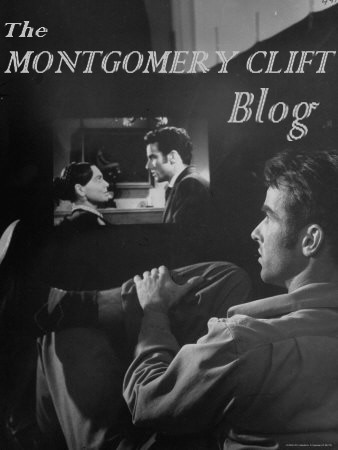

















.-+albornoz+(4)+BLOG.jpg)
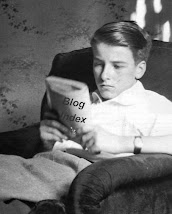
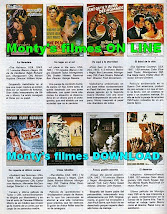


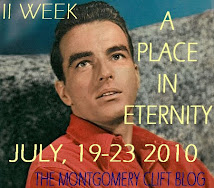
















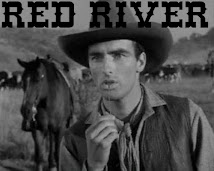


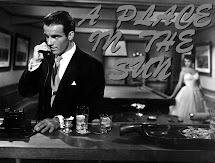2.jpg)
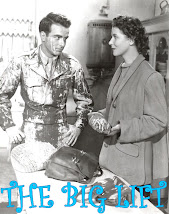.jpg)


.jpg)

